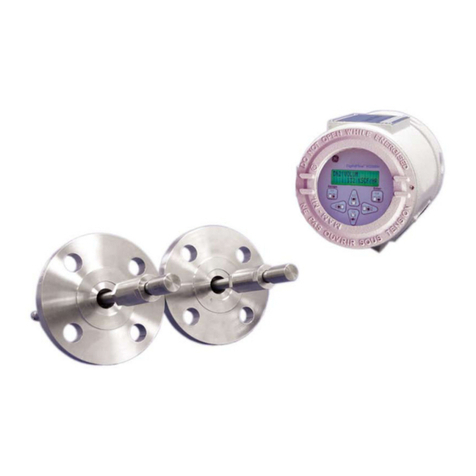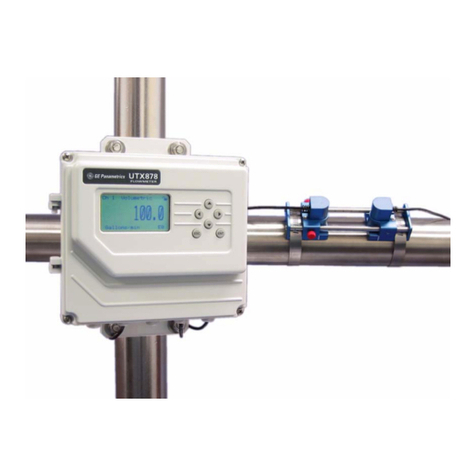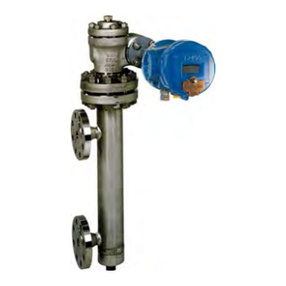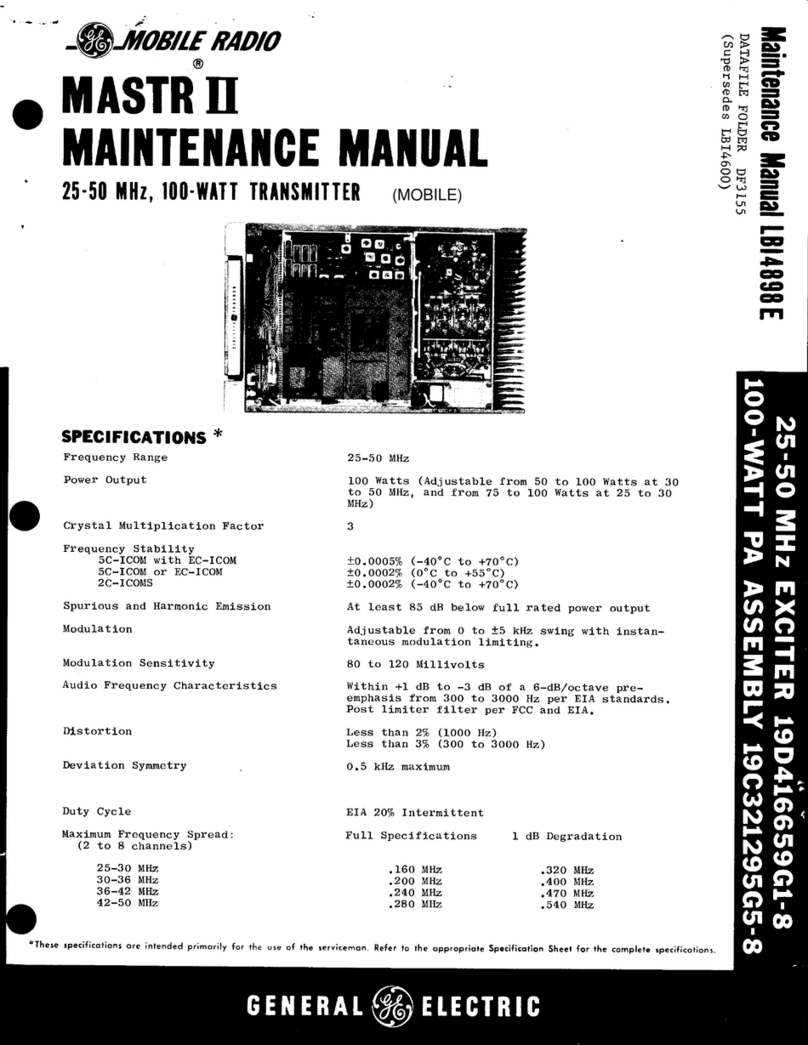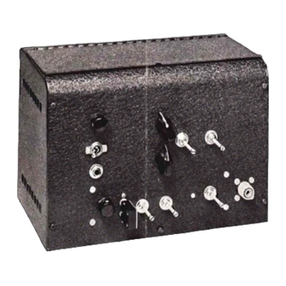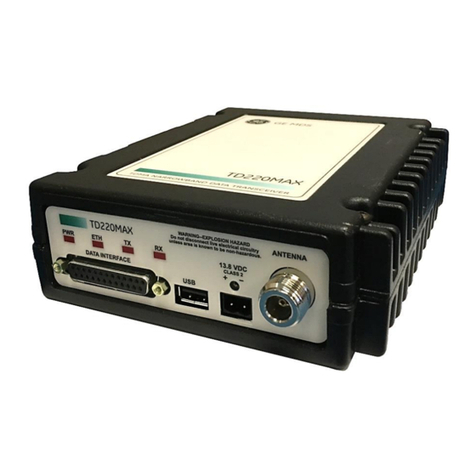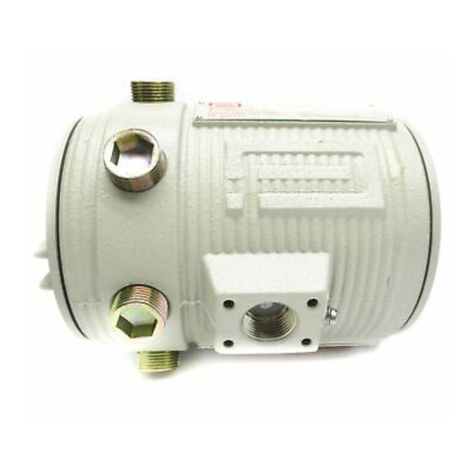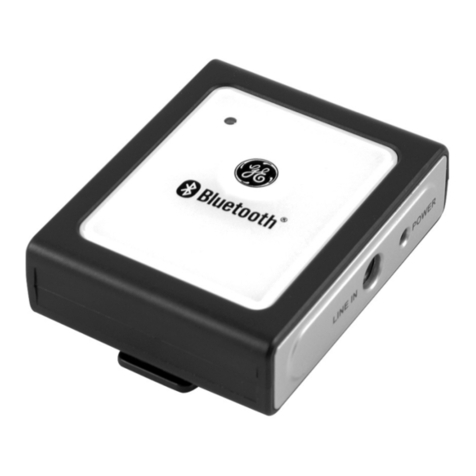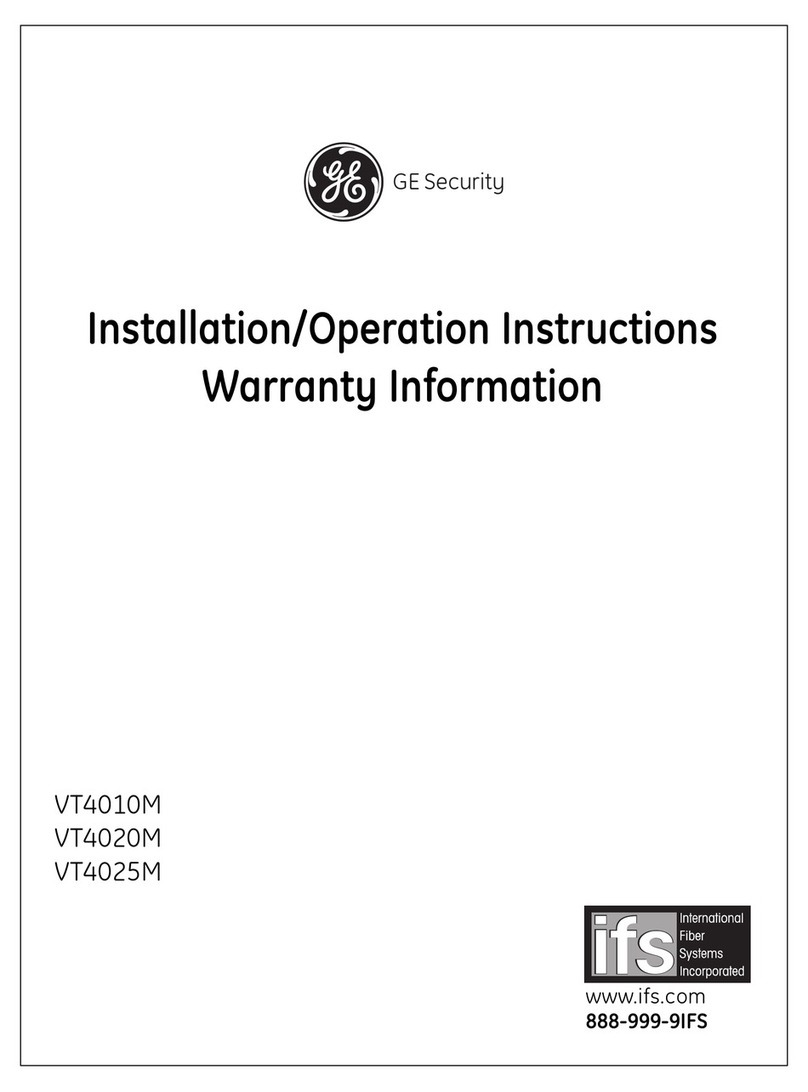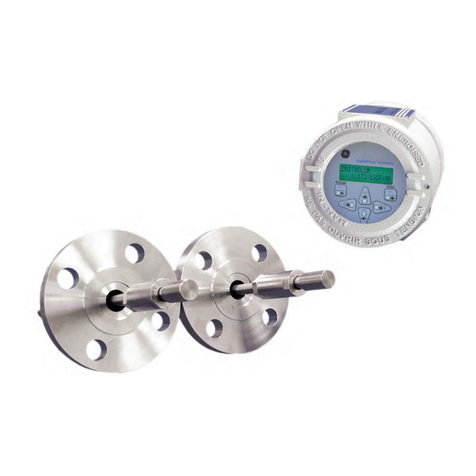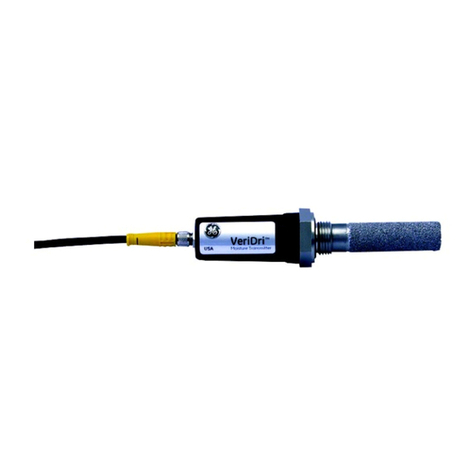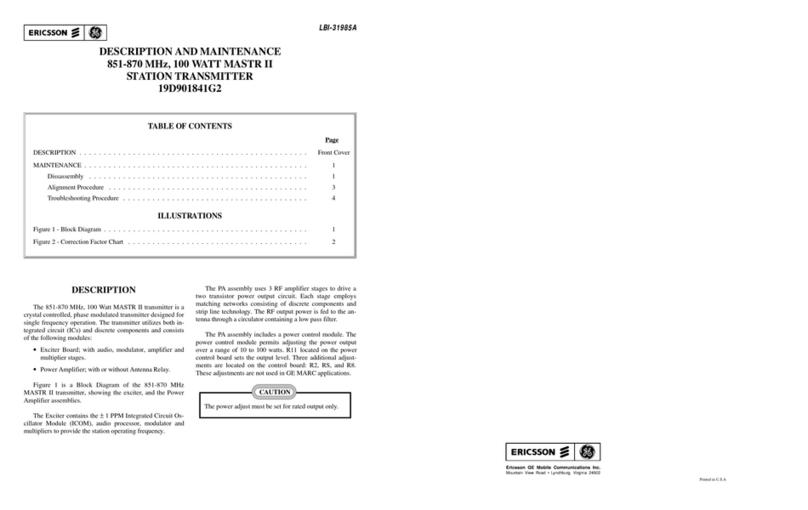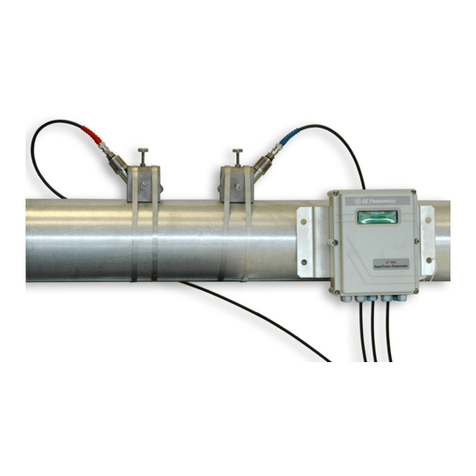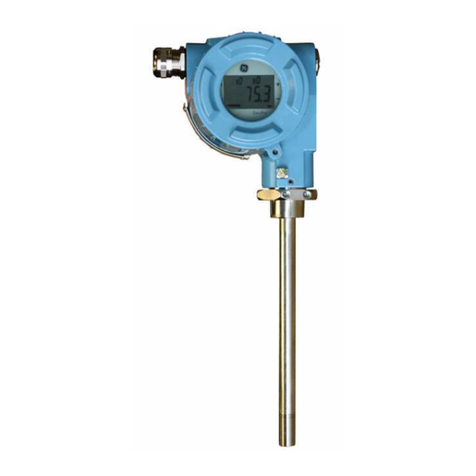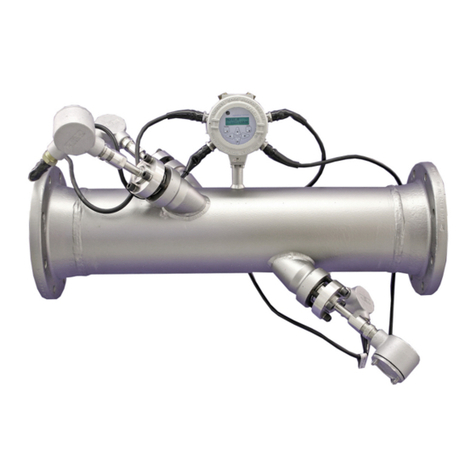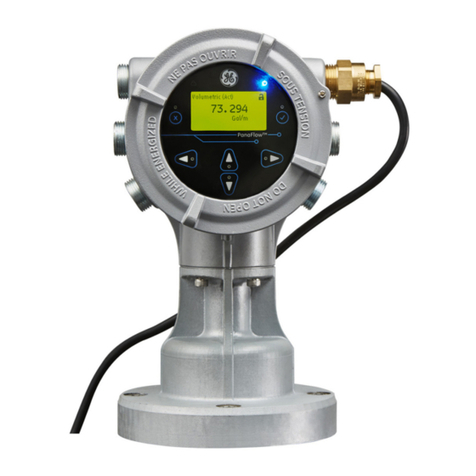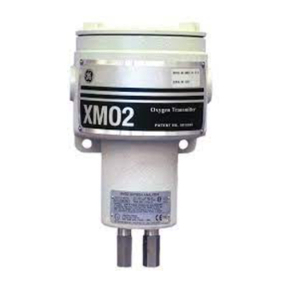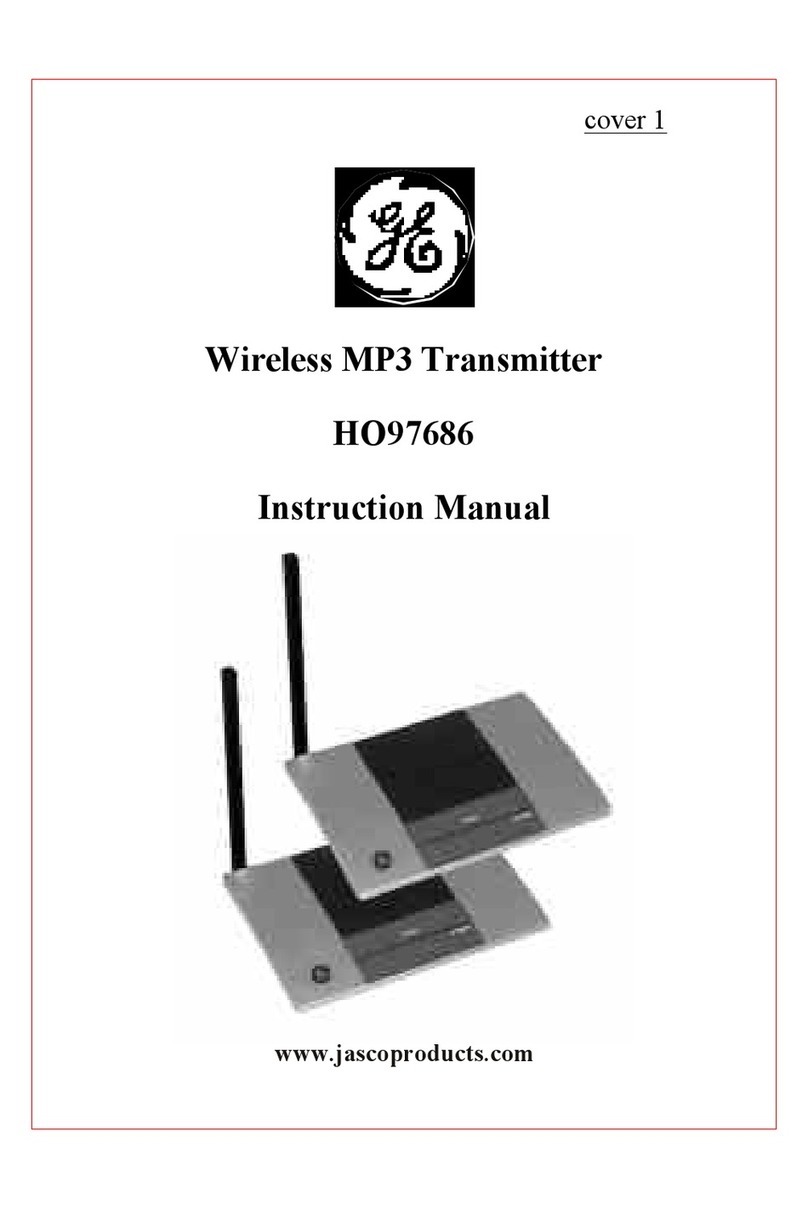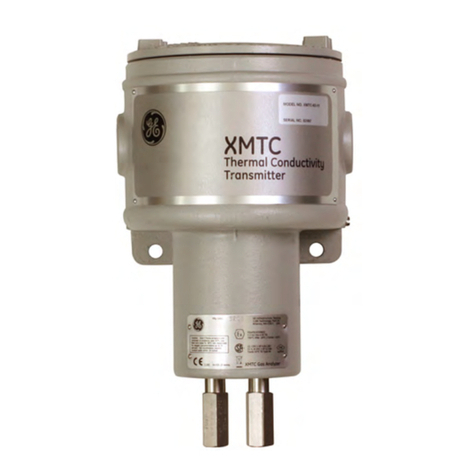
The resistance component of the antenna imped-
ance is made of two parts: radiation resistance which
represents the radiation of power or waves away
from the antenna and which is productive of a useful
result; and loss resistance which is a combination of
losses due to conductor and ground resistance, and to
dielectric hysteresis. Loss resistance performs no
useful function and every effort should be made to
maintain it very small in comparison with the radia-
tion resistance. The efficiency of an antenna with
respect to radiation of power may be expressed as the
ratio of radiation resistance to total antenna resist-
ance.
Antenna resistance varies over wide limits with
frequency. The resistance values approach very high
values at the even harmonics, and minimum values
at odd harmonics. It is thus seen that the operation
of a radio transmitter over a wide frequency band
requires that the radio transmitter be capable of
providing a considerable range of output voltages.
This is accomplished in each transmitter tuning unit
by a six-point ANT. COUPLING SWITCH, D. In
order that the voltage range required be kept a mini-
mum, antennas are usually "resonated" ; that is, they
are series tuned by either inductance or capacity as
may be necessary so that the required output volt-
age range depends only on the antenna resistance
variation over the desired frequency range.
When operating antennas at frequencies lower than
their fundamental or odd harmonics, they appear
to the antenna tuning equipment as a capacity in
series with a resistance. In order to balance out this
capacitive reactance, it is necessary to load the
antenna by means of an inductance, the reactance of
which is made equal to that of the apparent antenna
capacity. For operation of antennas at frequencies
higher than their fundamental and odd harmonics,
the converse is true, a capacity in series with the
antenna being necessary in order to balance the
apparent antenna inductive reactance.
In most cases, except where 3/4- and 5/4-wave
trailing wires are used for high frequencies, antenna
operation will be around the fundamental frequency.
In general, it may be said that if antennas are
operated so that their effective length is an appreciable
percentage of the operating wavelength, they will
have marked directive properties. This corresponds to
operation near to and higher than the fundamental
frequency. When antennas are operated at frequencies
much lower than the fundamental, the ratio of
radiation to total resistance is less favorable, but the
directive properties are not nearly so evident. The
fundamental frequency of an antenna depends mainly
on its effective length including the ground lead.
Fundamental frequencies in the range of 2500-7000
kilocycles will be the most common with the usual
types of fixed antennas, while fundamentals as low as
1500 kilocycles will be obtained with 200-foot trailing-
wire antennas.
The antenna tuning equipment in the radio trans-
mitter is designed to feed antennas at any frequency
from 800 to 12,500 kilocycles. Over this band of fre-
quencies it is necessary to feed antennas at, above and
below their fundamental frequencies. Therefore, the
circuit and circuit constants are so selected as to per-
mit of both current and voltage feed. A rotating
inductor and a tapped inductance provide the induc-
tive reactance variation. A variable capacitor pro-
vides the variation in capacitive reactance and also
serves as a coupling impedance for voltage feed.
Controls governing the variation in inductive or
capacitive reactance are so arranged that inductance
or capacitance is increased with increase in dial
reading.
With the ANT. CIRCUIT SWITCH, N, bn
position 1, the radio transmitter works into a simple
series resonant circuit, in which the high voltage
built up across the antenna tuning capacitor is used to
"voltage feed" the antenna. This circuit is generally
used for high frequencies and fairly long fixed antennas.
The antenna feed circuit is maintained at resonance
by means of ANT. IND. TUNING, M, while the
voltage fed to the antenna is varied by means of
ANT. CAP. TUNING, 0, and ANT. COUPLING
SWITCH, D. Feed circuit resonance is indicated
by the ANT. CURRENT meter. The current in the
feed circuit is adjusted by control D and should not
exceed 6 amperes. The step-by-step tuning procedure
is as follows:
(1).
Set control 0 at some arbitrary scale read-
ing.
(2).
Resonate circuit by means of control M for a
maximum reading on ANT. CURRENT meter.
(3).
Adjust control D so that antenna ammeter
reads below 6 amperes.
(4).
Re-resonate circuit as in 2.
Repeat the above procedure until the proper loading
(200-220 ma on CW) is indicated on the plate am-
meter. The lower the dial reading on control M and
the lower the reading on the ANT. CURRENT
meter that it is possible to obtain at a given frequency,
the more power will actually be delivered to a given
antenna. The lower the reading on control M and the
lower the ANT. CURRENT readings, the less the
tuning circuit losses and thus the more useful power is
delivered to the antenna for radiation purposes.
With ANT. CIRCUIT SWITCH, N, on position 2,
the radio transmitter works into a series resonant cir-
cuit where the antenna is "current fed." The antenna
circuit is resonated by means of ANT. IND. TUN-
ING, M, and ANT. CAP. TUNING, 0, as indicated
by the ANT. CURRENT meter. This circuit is used
generally for operation near the fundamental fre-
quency of the antenna.
7
